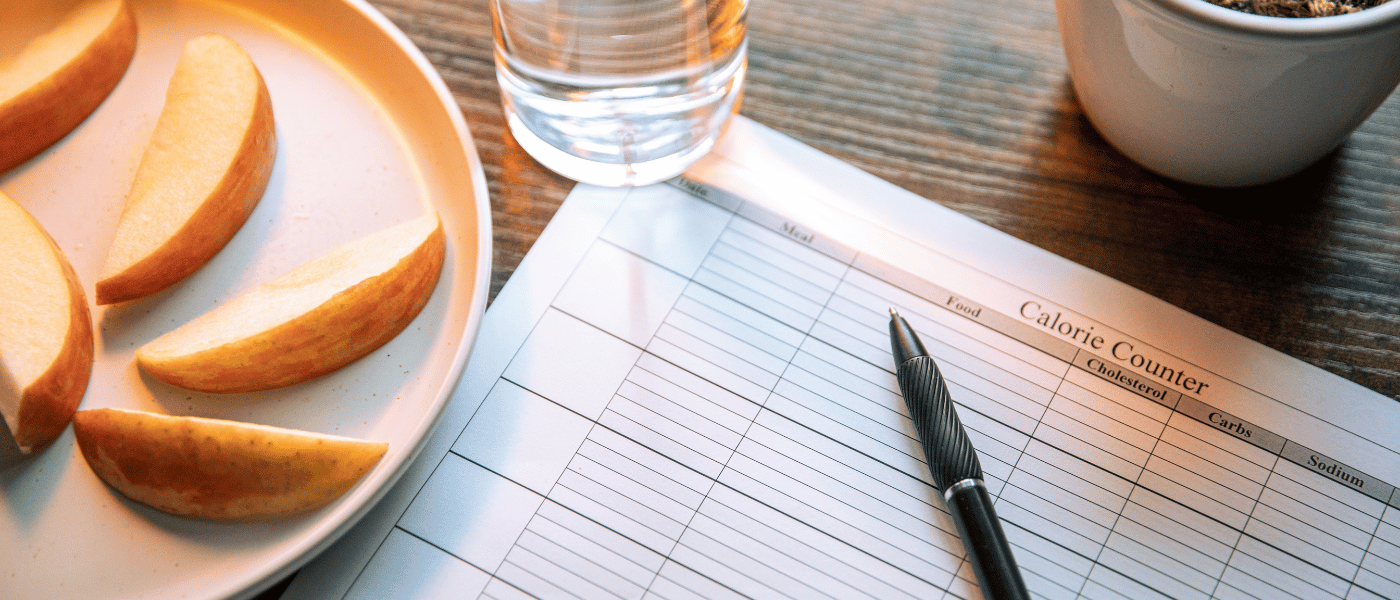An Extensive Guide on How to Track Alcohol Macros
From Margaritas to Macros: Why Tracking Alcohol Matters in Your Diet
In today's bustling world, where beverages are a core essence at social gatherings and celebrations, it is simple to forget the negative effects that these drinks can have on our general health and well-being. While we may be aware of the immediate impacts of alcohol consumption, such as its capacity to reduce tension and remove inhibitions, we often forget to pay attention to its unveiled facet- its macro composition.
Monitoring the macronutrient content of alcoholic beverages is referred to as "tracking alcohol macros," and has become recognized as an important tool for people trying to lead balanced lives.
In this self-care era, calories are no longer the concern of people who adhere to strict diets. Instead, a comprehensive understanding of the nutrients in our drinks has taken the forefront. Raise your glass to knowledge, and let’s dive into the realm of alcohol macros and discover how tracking them can shape a healthier, more balanced lifestyle.
Unveiling the Macros: Decoding Alcohol's Nutritional Composition
As with anything, planning can be a lifesaver and save you a lot of stress. Many restaurants have their menus online and will often mention the ingredients in their dishes. Some places even mention the calories in their meals now, and most fast food chains have the nutritional info for all their items available online, which includes calories, allergens, etc.
Although alcohol is not officially recognized as the fourth macronutrient, it is often referred to as such due to its unique properties and effects on the body. Unlike the traditional macronutrients: carbohydrates, proteins, and fats, alcohol provides calories but not essential nutrients and does not serve as an energy source for bodily functions. That is why these calories from alcohol are termed as `empty calories.’
When it comes to calories, alcohol differs from other macros in terms of its energy content. While carbohydrates and proteins contain approximately 4 calories per gram, and fats contain 9 calories per gram, alcohol contains 7 calories per gram. This higher calorie density stems from alcohol's chemical composition and its ability to be converted into energy by the body. Additionally, the body processes alcohol differently than other macronutrients. Carbohydrates, proteins, and fats are broken down and metabolized in different ways to provide energy and support bodily functions, whereas alcohol is metabolized primarily in the liver. Moreover, the body cannot store alcohol as glycogen (the storage form of carbohydrates) or incorporate it into structural tissues such as proteins and fats.
Although alcohol is considered the fourth macronutrient in terms of caloric content, it must be emphasized that it should not be considered a necessary part of a healthy diet. Moderate and mindful consumption is key when incorporating alcohol into a balanced life.
The negative effects of alcohol to look out for
Excessive alcohol use can have short-term and long-term negative effects on the body.
It can contribute to weight gain due to its high calorie content and also because few people take it into consideration while working out their daily calorie intake.
Other side effects include dehydration, hangovers, impaired judgment and coordination, mood changes, sleep disturbances, digestive issues, hindered muscle growth, and a weakened immune system. It’s important to be aware of these potential consequences and consume alcohol responsibly, considering your tolerance and overall health.
Tracking Alcohol Macros: Basic Principle
Calculating the calorie content of alcohol involves considering the alcohol content by volume (ABV) and applying a conversion factor. Here's a general formula for calculating alcohol calories:
Calories = (Volume in ounces) x (ABV) x (Conversion factor)
The conversion factor for alcohol is typically 1.6 or 7.1, depending on whether you're using the calorie value per gram or per milliliter, respectively.
To measure and convert alcohol serving sizes, here are some common units of measurement and their approximate conversions:

1. Standard Drink: In the United States, a standard drink typically contains about 0.6 ounces (14 grams) of pure alcohol. It is equivalent to:
- - 1.5 ounces (44 milliliters) of distilled spirits (40% ABV)
- - 5 ounces (148 milliliters) of wine (12% ABV)
- - 12 ounces (355 milliliters) of beer (5% ABV)
2. Milliliters (mL): Many alcoholic beverages provide alcohol content in milliliters. To convert milliliters to ounces, divide by 29.574.
3. Fluid Ounces (fl oz): Some alcoholic beverages may list the alcohol content in fluid ounces. To convert fluid ounces to milliliters, multiply by 29.574.
Remember that the calorie content of different alcoholic beverages can vary depending on factors such as added sugars, flavors, or mixers. The values provided above are general approximations and may not be exact for all brands or specific variations of alcohol. It's always a good idea to refer to the nutritional information provided on the label or consult a reliable source for accurate calorie calculations.
Balancing Alcohol Macros in Your Diet
Incorporating alcohol macros into your overall macronutrient goals requires adjusting your intake of carbohydrates, proteins, and fats accordingly. Here is a broad strategy to ponder about it:
- Establish Macronutrient Goals: Based on your dietary objectives, choose your desired macronutrient distribution. Setting a certain percentage or gram range for carbohydrates, proteins, and fats is often required.
- Calculate Alcohol Calories: Using the previously given technique, determine the number of calories in each drink you consume. Include these calories in your daily caloric target.
- Modify Proteins, Carbohydrates, and Fats: Since alcohol doesn't include any important nutrients, it's usually advised to consume less of the other macronutrients to make up for the calories in alcohol.
-
- Carbohydrates: To account for the calories from alcohol, slightly reduce carbohydrate consumption. Ensure that you are getting your complex carbs from foods like whole grains, fruits, and vegetables.
-
- Proteins: To maintain and rebuild muscle, consume a proper amount of protein. Think about choosing lean proteins like poultry, fish, lentils, and dairy items.
-
- Fats: Take into account that fats are calorie-dense and adjust your consumption as necessary. Choose healthy fats from foods like olive oil, nuts, seeds, and avocados.
-
Tips for Mindful Alcohol Consumption
To restrict alcohol consumption, it's crucial to set boundaries, pace yourself, practice mindful drinking, prepare ahead of time, and seek help as necessary. Setting explicit limits and paying attention to your alcohol intake might support a balanced attitude to drinking. When going out, make sure you’re aware of how much alcohol (and calories) you consume. Check out our guide for more information.
Alternating alcoholic drinks with non-alcoholic alternatives, including water or sparkling water, can also aid in lowering total alcohol intake. Your efforts to restrict your alcohol use can be encouraged and kept accountable by asking for help from friends, family, or support groups.
There are a number of alternatives to alcoholic beverages with high caloric content. You may enjoy mocktails, which are alcohol-free versions of cocktails, by using flavored syrups, fruit juices, or soda water in place of spirits. alternatives for low-calorie wine or beer can also be chosen because they have fewer calories than regular varieties.

An alternative that is both hydrating and refreshing is sparkling water infused with fruits or herbs. Natural teas, both hot and iced, offer a wide assortment of flavors and medical advantages without the liquor or extreme calories. Moreover, liquor-free brew and wine choices are accessible and available, giving the taste and experience of cocktails without the liquor content.
Tracking Alcohol Macros: Tools and Resources
Apps and websites like MyFitnessPal, Lose It!, Chronometer, and Alcohol Tracker offer convenient ways to track alcohol macros and access nutritional information on alcoholic beverages. These platforms utilize extensive databases to provide accurate data.
Additionally, the integration of Nutrioscale, a smart kitchen scale that uses AI to recognize and track food items, further simplifies the process. Nutrioscale eliminates the need for manual data entry by automatically retrieving nutritional data when items, including alcoholic beverages, are placed on the scale.
The integration of Nutrioscale allows for efficient and accurate tracking of alcohol macros. By utilizing these tools, individuals can easily monitor their alcohol intake, align it with their macronutrient goals, and make informed choices about their overall dietary habits.
Cracking the Code: Conclusion
Throughout this extensive guide, we have covered key points to help you navigate the realm of alcohol macro tracking effectively. We discussed the significance of setting limits, practicing mindful drinking, and seeking support to moderate alcohol consumption. By being aware of your alcohol intake and planning ahead, you can make responsible choices and maintain control over your health and well-being.
Utilizing apps, websites, and tools like Nutrioscale can simplify the process of tracking alcohol macros. These resources provide access to comprehensive databases and streamline the tracking process, empowering you to make informed decisions about your alcohol consumption.
Remember, responsible alcohol consumption is crucial for achieving and maintaining your health and fitness goals. By tracking alcohol macros, you can ensure that your alcohol intake aligns with your overall macronutrient goals and dietary preferences. This level of awareness allows you to strike a balance between enjoying occasional drinks and pursuing a healthy lifestyle.
So, raise a glass with mindfulness and moderation, keeping your health and fitness aspirations in mind. Cheers to responsible alcohol consumption and the power of tracking alcohol macros for a healthier you!
